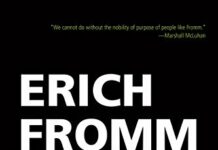
Ebook Info
- Published: 2013
- Number of pages: 527 pages
- Format: PDF
- File Size: 4.16 MB
- Authors: Erich Fromm
Description
A study of aggression from the renowned social psychologist and New York Times–bestselling author of The Art of Loving and Escape from Freedom. Throughout history, humans have shown an incredible talent for destruction as well as creation. Aggression has driven us to great heights and brutal lows. In The Anatomy of Human Destructiveness, renowned social psychologist Erich Fromm discusses the differences between forms of aggression typical for animals and two very specific forms of destructiveness that can only be found in human beings: sadism and necrophilic destructiveness. His case studies span zoo animals, necrophiliacs, and the psychobiographies of notorious figures such as Adolf Hitler and Joseph Stalin. Through his broad scholarship, Fromm offers a comprehensive exploration of the human impulse for violence. This ebook features an illustrated biography of Erich Fromm including rare images and never-before-seen documents from the author’s estate.
User’s Reviews
Reviews from Amazon users which were colected at the time this book was published on the website:
⭐Would have liked for Fromm to have just stated the obvious, that oppressive capitalism is what causes malignancy at both the top and bottom of society.
⭐I wish i read this book earlier in life. The philosophy and psychology of destructive behaviors you see around you and in yourself. So many levels and types of destructiveness which you don’t recognize and in turn can become the victim, or worse, become the agent of destruction. He debunks evolutionist, instinctivist, and behaviorist theories and replaces them with his own theory which makes the best psychological theory i’ve ever come across. Fromm is the most underrated thinker of the twentieth century. His thoughts are more relevant today than ever!
⭐The anthropological descriptions of some of the obscure cultures was completely fascinating to me! I had no idea such peaceful culture existed, nor culture that can be defined by suspicion, hostility, and treachery. Upon reflection you can see microcosm of these in modern society. You will definitely gain an ability to analyze people’s behavior in an objective, historically reflective manner after reading this book by a psychoanalyst. His explanations of modern psychoanalysis (as altered from Freud’s original theories and techniques) was completely unknown to me, having only taken intro psych class. It’s much less suspect in validity than I thought (from the perspective of a science student.)
⭐This is a great attempt to de-instinctivise human destrctiveness. While critics ma be able to poke holes into the theory, I liked that fact that the author has gone to great lengths to establish his theory that human destrctiveness is not an instinct. The book will help readers realign their own thoughts about human destructiveness. While I find it difficult to agree with the book ints entirety, I certainly share Erich Fromm’s view that human destructiveness can be controlled and that it is possible to remove violence from human life if all of us make a collective effort.
⭐Erich Fromm’s “The Anatomy of Human Destructiveness” was written in the hey-dey of psychology, when the oversaturization of the discipline was beginning to convince people that it alone held the key to otherwise irretrievable insights about human nature. By this point, we’ve collectively gotten more cynical about what psychology can and can’t do, but this book hails from the the field’s salad days, when merely to challenge Freudian assumptions was to reveal one’s own deep-seated Oedipal anxieties.Anyhow, it’s dumb. Laughable.It’s an attempt to explore the problem of evil, of why the only constant in human history seems to be people being nasty to each other. Fromm begins by discussing the instinctivists, moves on to the behaviorists, and even makes brief forays into neurophysiology and paleontology. But most of the book seems to be ungrounded assertion–almost unscientific stuff, in the sense that truths are not arrived at so much by repeatable experiments so much as by poetic epiphanies.And unlike recent popular books such as “Predictably Irrational,” “Freakonomics,” and “Blink,” this book comes from an age when those writing about human behavior felt they could make sweeping statements without having to cite much empirical experimentation.So I wouldn’t recommend reading this at all except for one part: the section on Hitler (pp. 411-481). Forget Versailles and the Sudetenland! Fromm posits that Hitler’s malevolence arose instead from necrophilia, a sexual attraction to the dead. I had never heard that one before. The entire book bordered on the preposterous, but this section was at least entertaining.I respect Fromm’s “To Have or to Be” much more. As for the question he was getting at in his “Anatomy of Human Destructiveness,” I think Richard Dawkins’ “The Selfish Gene” made a lot more headway.
⭐As I was reading it, I kept thinking, “No, way. What a crap way to evaluate Man’s tendency to do evil.” Then I got to the concrete example analysis. And the analysis was spot on. So much was pulled in from historically accurate sources (sources that I was biased in favor of, at least) to back it up that by the end of it, I was wondering where the dissonance was occurring. When I work up the stomach to re-read it, I’ll see if the the theory is more attractive the second time around.
⭐Fromm’s volume “The Anatomy of Human Destructiveness” is the most complete and thorough research on the topic of aggression. It validates the theory that malignant aggression or destructiveness is part of human character, one of the passions we possess like love, ambition, and greed. His book takes the reader on a phenomenal journey that enlightens the mind and unearths the deepest passion in the human heart. Fromm explores with surgical precision the various types of human aggression and the history behind it. His fabulous research is unequivocally the most prolific and exhaustive on this topic. This text is a must read. It will help you discover and understand yourself as well as the world that you live in.
⭐A classic one of a kind, this is a must for your Social Psychology library. This is the best study I have ever seen in applied personality theory, history and critical perspectives in this character analysis of the autism, sado-masochism and malignant destructiveness of Adolf Hitler and more.
⭐This is one of the few really good treatments of the problem of evil by a non-theological or non-philosophical source that I know of, it certainly is one of the most comprehensive.Albeit that Fromm is writing at a particular time and some of his insights are dated, such as a lot of the neurological or neuro-scientific research (which he admits himself in the introduction he is no expert in and largely consulted others to provide this content). There is also, in the final chapter a focus upon Hitler and it is clear that he is processing some of the events of WW2 Europe.Themes within this book may be familiar to anyone who has read others of Fromm’s books (I bought this book first, many people who read nothing else by Fromm have read this one, I read his other books first), such as necrophilious and biophilious drives in conflict, malignant and benign aggression, rejection of (classical, ie Libido theory) Freudianism, Konrad Lorenz, BF Skinner (so instinct and behaviourist theories).The book is in three parts, the first one presents instinctiveness, behaviourism, psychoanalysis; the second the evidence against the instinctivist thesis (including chapters on neurophysiology, animal-behaviour, paleontology, anthropology); part three the varieties of aggression and destructive and their respective conditions. Fromm has really been rigorous in his research and supports his insights, this book has all the hallmarks of a magnum opus too.I think his other books have a great deal of insight and taken together provide the best insight of all, in particular if you have read and enjoyed his books Beyond Freud and The Pathology of Normalcy I think you would enjoy this book too.It may be dated, the theories and theorists Fromm is reacting to in presenting his own, equally dated too, such as Freud, Skinner and Lorenz, but some of their ideas remain popular with people who do not know their source. Lorenz’s ideas about a sort of “build up” or “hydraulic” pressure release type of aggression, Freud’s libidinal and “death drive”, Skinner’s conditioning environment ideas. They all still have a certain currency among the public, even among some pundits, if they have been subject to compelling criticism and challenge.While I mentioned Fromm’s other books I do not believe that a reader necessarily needs any prior acquaintance with Fromm to read this book and find it interesting or to understand it. Its worth reading and rereading. This edition has a very good bibliography and references and index. Recommended.
⭐I really enjoyed this book. Some parts however seem dated, and his theorising within a Freudian framework needs to be questioned or challenged. Also worth checking out Steven Pinker’s book on violence.
⭐Il libro sembra nuovo, anche se l’ho acquistato usato. Per quanto riguarda il contenuto l’ho trovato molto interessante, l’inglese è semplice e comprensibilissimo, ogni pomeriggio leggo un po’ di pagine e avrò compagnia a lungo, visto che è un libro molto alto. Davvero godibile, lo consiglio. Spedizione eccellente come sempre. Felicissima dell’acquisto.Wow, what a book. Fromm just has so much to say on these subjects of human nature that touch into all aspects of culture, society and human life. The book certainly isn’t as disjointed as this sounds, I think it’s his subject matter that is so far-reaching that people form all walks of life can find worth in the things that Fromm discusses.For Fromm, I think it’s apparent that he’s trying to make sense of WWII and how a man like Hitler could have done what he wanted to do. Not only is Fromm a brilliant man, but he has obviously gained from his experiences in the war, and is admirable trying to make sense of it all for the benefit of humankind. It’s difficult to know about what to comment on in this book. It’s deep, very long and sometimes difficult to get through, but it’s so much worth it. His perspectives on human situation show how psychology can describe life in practical ways. It can help us make sense of an often nonsensical world. And, even in doing so, he often describes everyday concepts (for example, Freedom) in ways that fit what happens in our world.This is a book I come back to often for inspiration and understanding. It’s a book that can reach into anyone concerned with any type of human endeavor. It’s a wonderful collection of thoughts and explanation.
⭐
Keywords
Free Download The Anatomy of Human Destructiveness in PDF format
The Anatomy of Human Destructiveness PDF Free Download
Download The Anatomy of Human Destructiveness 2013 PDF Free
The Anatomy of Human Destructiveness 2013 PDF Free Download
Download The Anatomy of Human Destructiveness PDF
Free Download Ebook The Anatomy of Human Destructiveness





